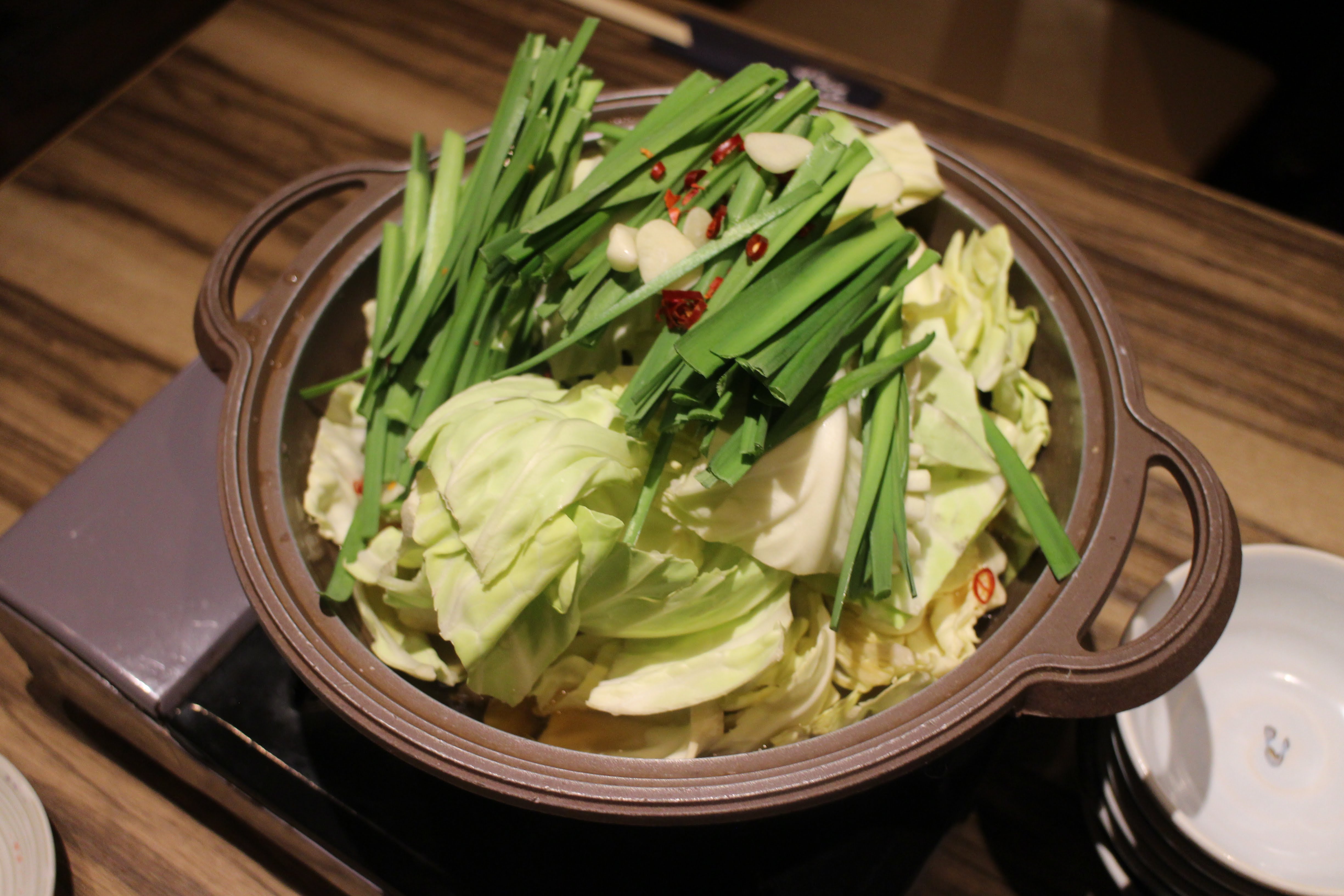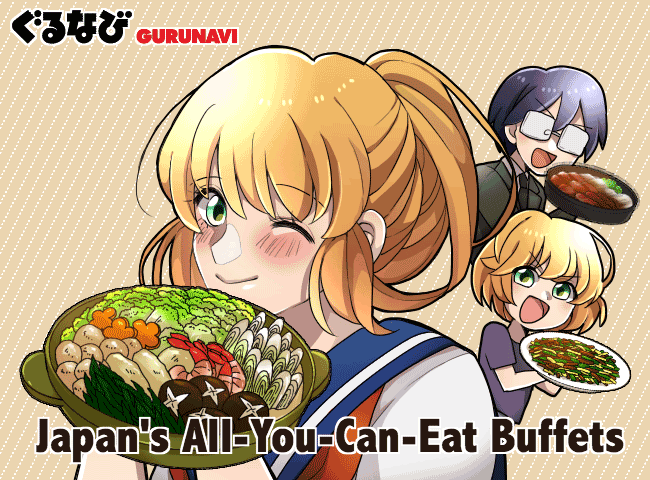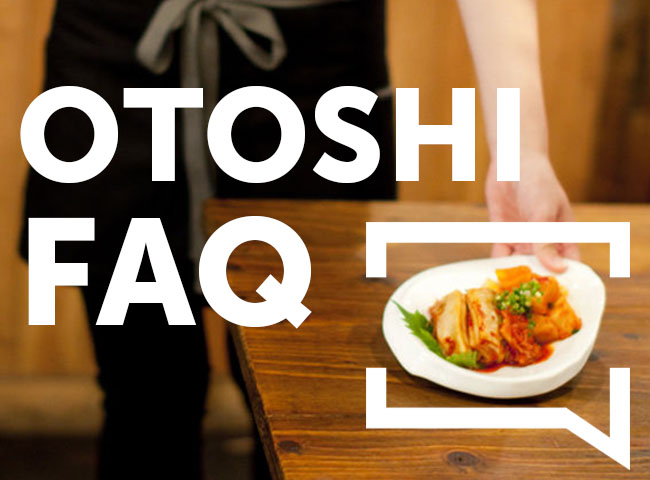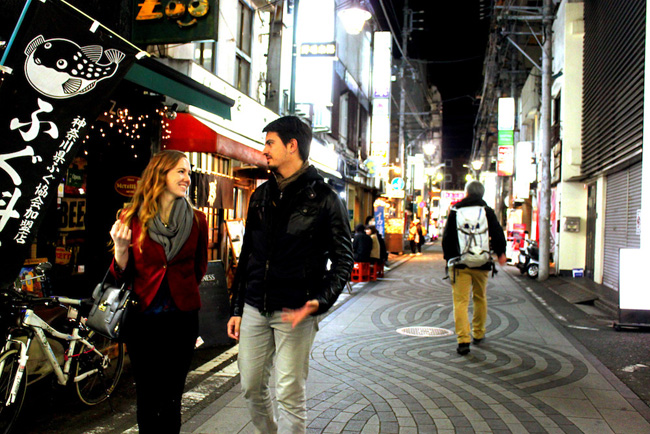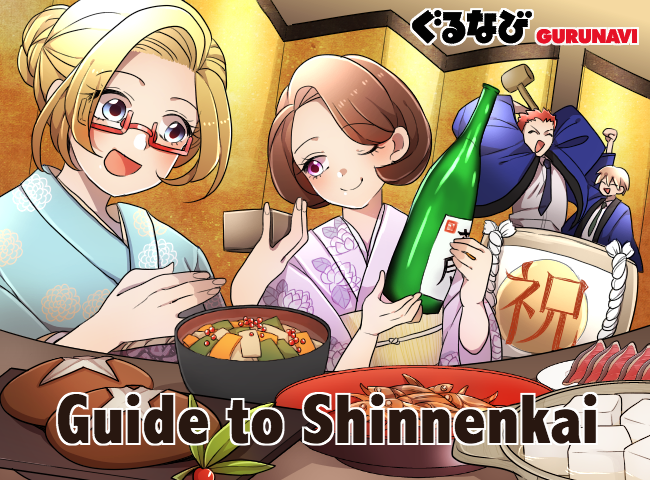Tachinomi 101: Your Guide to Japan’s Quirky Standing Bars
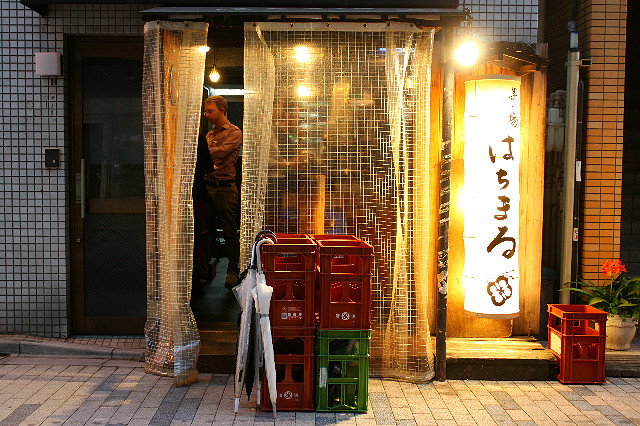
Tachinomi are Japanese standing bars (“tachi” meaning stand, “nomi” meaning drink). Traditionally, they were a no-frills type of bar located around train stations or in working-class areas, where salarymen would come to unwind after a hard day’s work. In recent years, these novel stool-less izakaya-style drinkeries have experienced a widespread surge in popularity—they’re popping up in far-reaching locations, featuring creative decor, a wider selection of food and drinks and a colorful crowd. Sleek, minimalist bars in affluent areas catering to a sophisticated female clientele, tiny chic haunts serving organic French wine and plates of charcuterie to hip young designers, and even boutique sake bars with walls plastered in vintage posters playing reggae and dishing up kushiage—all reflect the diversity of tachinomi.
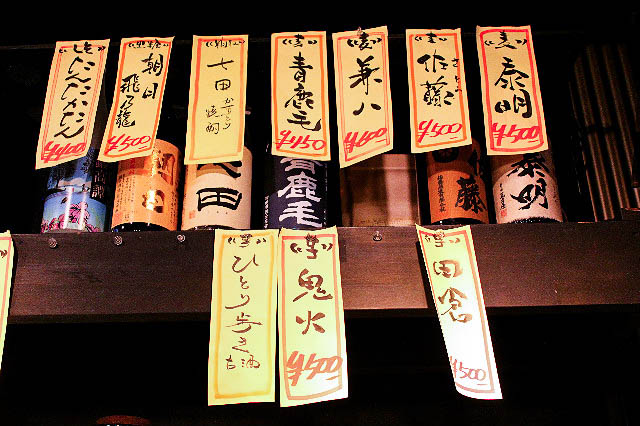
Aside from the standing factor, a fun, casual atmosphere and cheap prices remain the same no matter the venue. Read on to see how you too can take a stand like a local—ordering for yourself and understanding tachinomi etiquette.
Finding a Place to Stand
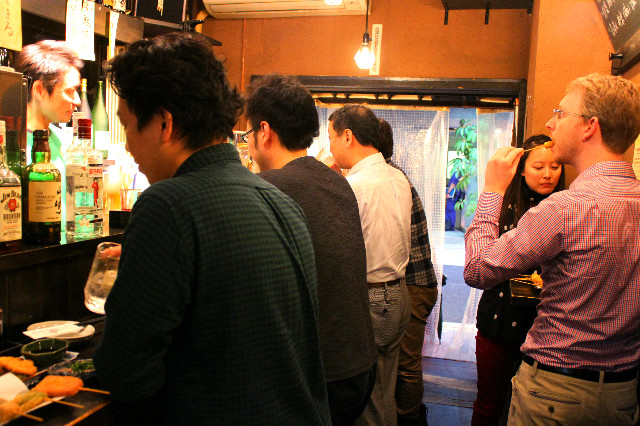
When you go to tachinomi, you should expect a lively atmosphere. Most often there’s no host, so you can find a spot of your choice for yourself and friends. Look for somewhere with enough room where you can comfortably stand, drink and eat while still allowing those next to you some elbow room. If you want to check if it’s ok to take a space, you can say:
Excuse me, is here ok?
Sumimasen, koko ii desu ka?
Most likely the person will simply smile and nod, sparing you the need for deep conversation and allowing you to start your tachinomi adventure off right.
Sake, Shochu and Other Tachinomi drinks
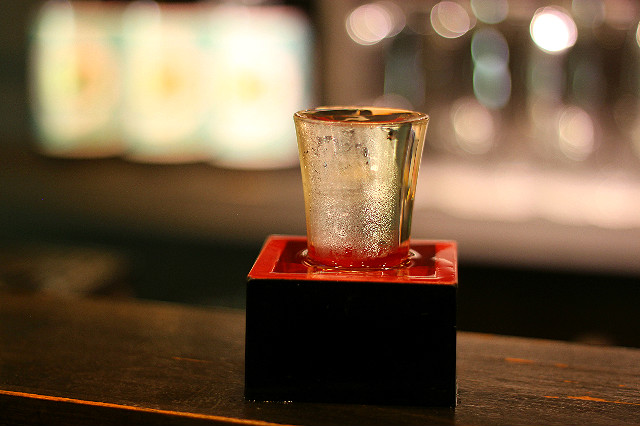
As tachinomi were traditionally bare-bones drinking establishments, the drinks on offer were typically beer, nihonshu (Japanese sake) and shochu. These days, you can still count on these drinks being served. If you’re ordering nihonshu, you may want to ask for reishu (cold), kanzake (warmed) or even atsukan (hot) sake. You may also prefer having your sake in a tokkuri (small sake decanter)—as for the number of cups and glasses, just use gestures. To request the type of drink or container you want is really as simple as saying the name and “please” in Japanese—we’ll teach you how in the section below on how to order!
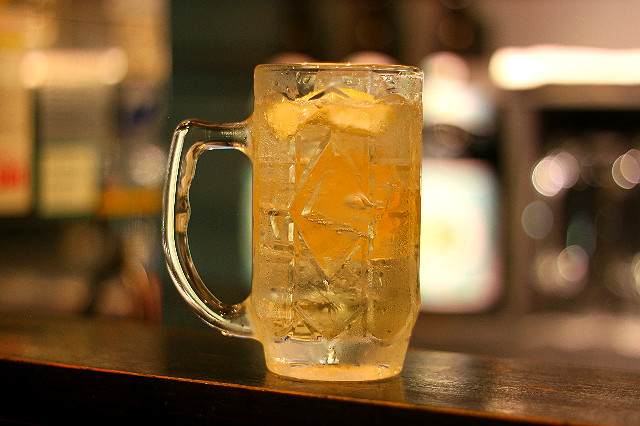
Whiskey and umeshu (plum wine) are other common beverages, both which can also be served on the rocks (rokku) or with soda (highball and umesoda, respectively). Shochu can also be drunk on the rocks or with soda, but is usually served with a mixer—“lemon sour” (mixed with lemon juice and soda water) or “oolong high” (mixed with oolong tea).
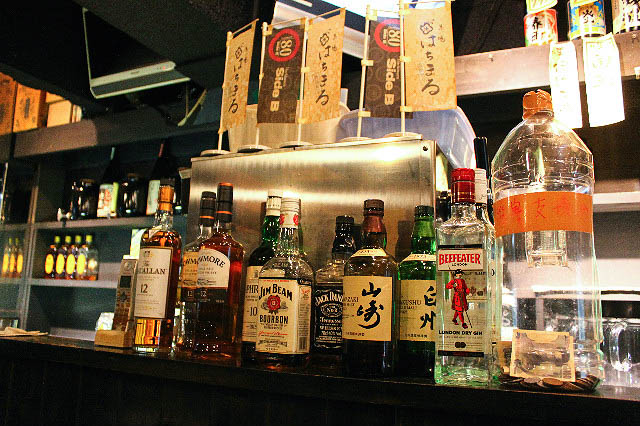
Drinks outside of these options will depend on the type of tachinomi—some are specialty wine or champagne standing bars, so will have a wine and possibly a selection of other drinks. You can always check and see what other people are drinking and what bottles are behind the bar. Drink menus might be available, although are more often displayed as hanging signs with names and prices written in Japanese. But don’t worry if you can’t read these, you can rest assured that the prices for drinks are usually cheaper than regular bars, between 300-500 JPY.
Kushikatsu, Edamame and Other Tachinomi Food
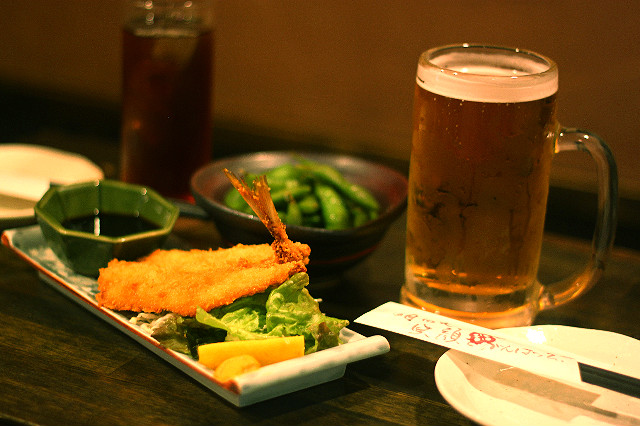
While you don’t have to eat at a tachinomi, having decent dishes available at very reasonable prices has always been one of their main draw cards. It’s also a good way to be introduced to a variety of food you may not have tried before.
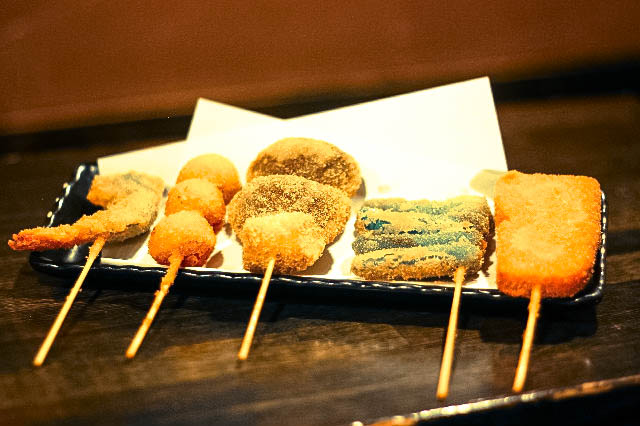
The izakaya-style selection of small dishes are designed to share, and generally cost between 200-500 JPY a plate. Dishes may change or run out depending on demand, yet another good reason to write the available menu on wall signs rather than physical menus! Still, it never hurts to ask, like this:
Do you have (an English) menu?
Eigo menu?

Even if the menu is only available in Japanese, don’t let this deter you from ordering food! The bartender and other standing bar customers are usually more than happy to tell you what’s available or share their recommendations. You can also enquire about what something is that someone else is eating.
What food is available?
Tabemono wa?
What do you recommend?
Osusume wa?
Excuse me, what is that?
Sumimasen, kore wa?
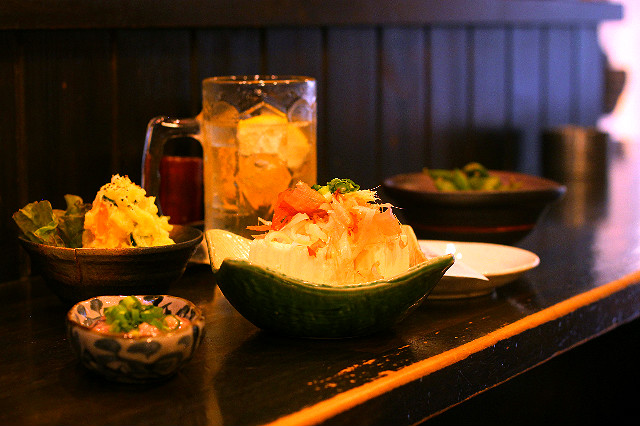
Food can vary depending on the type of tachinomi-some serve home-style cooking, some old-school sake accompaniments like kurasumi (salt-pickled mullet roe), some Spanish tapas like ajillo (seafood cooked in oil and garlic) or Italian-style nibbles like antipasti or olives.

At more traditional tachinomi, you can usually rely on some staple dishes—torinegi (grilled chicken and onion on skewers), kushikatsu (crumbed and grilled meat and vegetables on skewers), a tofu dish, and edamame.
Tables are usually stocked with everything you need to enjoy your meal - individual dishes, condiments and chopsticks – so that there is usually no need to ask.
How to Order at Tachinomi
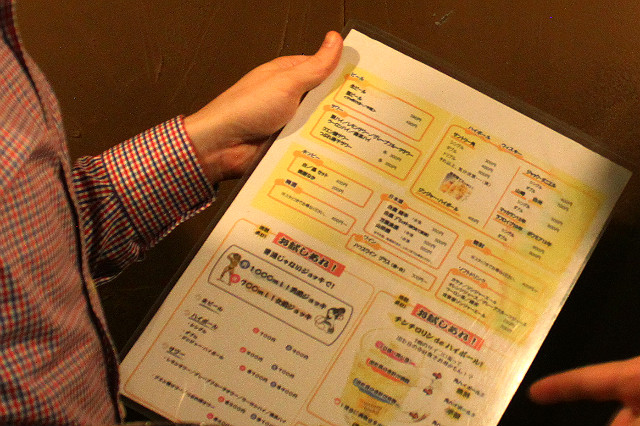
Generally, tachinomi do not have table service—you will need to go to the counter to order, taking your dishes back to your table once they are served. When you go up to the bar, speak up to show that you want to order by saying ‘sumimasen’ (excuse me) or raising you hand to flag down a staff member, as if the bar is busy they may not notice you. When ordering, you can use fingers to indicate numbers, gesture to dishes you would like, or point out items on a menu—just remember to be courteous and try and add kudasai (please).
I'd like [food/drink] please.
[food/drink] kudasai.
I'd like that please (pointing to a dish)
Kore kudasai.
The same again please.
Onaji no o kudasai.

As tachinomi are quite often small bars and the owner and cook may be the same person, some patience may be required while waiting for your order. Once you’re finished eating and drinking, it’s good etiquette to take empty dishes to bar.
How to Pay at Tachinomi
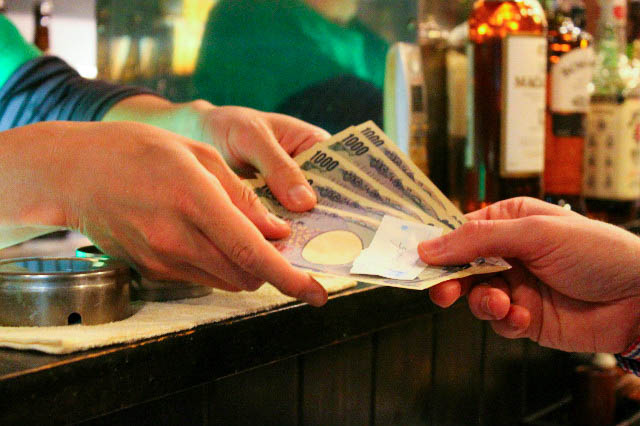
In some places you pay as you go, others you pay at the end—it’s more typical to pay when you are finished. To signal you want the bill, you can ask for the check (chekku), or hold your fingers up in an “X” sign. Please note that you should expect to pay in cash, as many tachinomi are small businesses that haven’t set up a credit card system. You can usually have a few rounds of drinks, some plates of food and a good time, walking away around only ¥2000 out of pocket.
Other Considerations
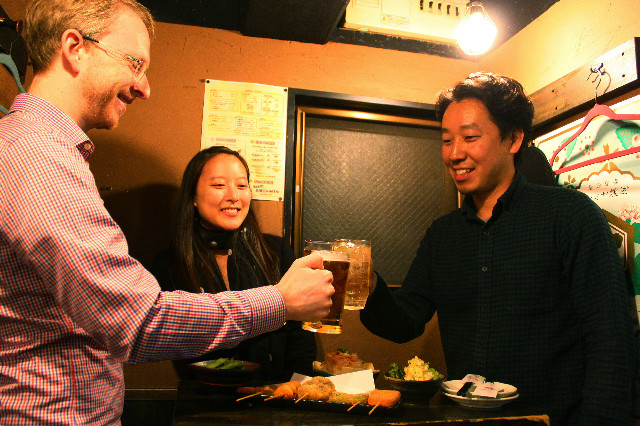
Cover charge:
Some may have cover charge (usually not much, around ¥300),and this includes the otoshi (a non-negotiable table snack) that you’ll receive on arrival.
Smoking:
Tachinomi are generally smoking areas. Ashtrays are usually provided at the table.
Length of stay:
You can stay for 30 minutes or for 3 hours, but keep in mind that the bars are the owner's’ livelihood, and that spaces at the busy bars are prime real estate for other thirsty customers, so it’s good etiquette to order more drinks or food the longer you stay.
Thank the owner on your way out—a simple arigatou (thank you) and a nod or wave does the trick!
Tachinomi Are a Unique Japanese Bar Experience—One Not to Be Missed!

Whether you visit a more traditional standing bar, or one of the variety of modern options, stop in at one tachinomi, or do a popular ‘tachinomi hop’, trying different food and drinks at different places, you’re bound to meet locals, try some special dishes, and get an authentic insight into life in Japan—all with the exhilaration of standing and drinking!
All photos in this article were taken at Hachimaru.
Located in the northern Tokyo district of Ochanomizu, Hachimaru is a cosy tachinomi with a welcoming owner—Frank—and band of regulars. The electic-looking venue fits around 25 people, who can position themselves along the bar or around a table to enjoy Hachimaru's wide variety of food, such as kushiage, udon, smoked cheese, and kaarage, while sipping on sake, beer, house wine, or a range of spirits. The decor is a colorful assortment of industrial-style lighting, giant empty bottles of whiskey filled with nuts, walls lined with sake bottles, and outdoor tables of stacked milk crates. Budget around 1000-2000 yen for evenings, 1000 yen for lunch. Owner Frank will ensure you have a good time!


